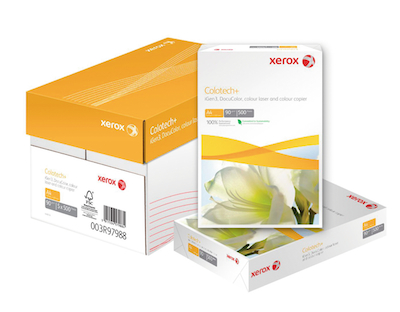Digital press vendors and paper suppliers have been busily approving different paper grades, but not everybody uses the ‘guaranteed’ lists. What is the value of a compatible paper grade for a digital printer?
When you are deciding on the paper stock to put through your digital press, what priorities guide your choice? Is it price? Is it compatibility with the digital engine the paper has to go through? Is it a desire to use a paper you commonly use on a litho press?
Every printer has to make this decision, and some are choosing a cheap, un-qualified paper stock. This leads Sham Ahmed, national digital sales director at Antalis, to emphasise the value of a guaranteed paper stock, as compared to non-guaranteed.
He said: ‘It’s a false economy. You don’t get the quality and consistency you want, but more important is how often the machines are down. Digital is very technical and the machines are quite delicate. You might save money printing on a non-guaranteed paper, but you get down-time because of fusers, rollers, blankets, etc. wearing out.
‘Printers invest a lot of money on a printing press and workflow and then decide to run the cheapest media through it and it does not make sense. It’s like a sports car with the cheapest fuel in it; you won’t get the same performance, and in digital print, performance is key.’
How widespread a problem is it? According to Kevin O’Donnell, marketing manager at Xerox, not as widespread as it used to be, although it still happens. He said: ‘In the early days of digital print, people used to throw on some cheap litho paper from China, but the market has moved on. It’s a lot more aware of the requirements of digital, the way it feeds, registers etc. The majority of digital printers are much more savvy about which substrate to use.
‘It still can be an issue though, and with margins becoming tight we don’t want printers to have a bad experience with papers that cost them money.’
It is certainly true that a build-up of dust or other contaminants can cause damage to the inner workings of a digital press, but they are rather more robust these days than they used to be. What has happened in the marketplace in recent years is a concerted attempt to test and qualify or guarantee large swathes of paper products for use with digital printing equipment. Xerox and HP Indigo, which is of course a fundamentally different printing process in any case, have been at the forefront of this. The libraries now run into the several hundreds and continue to grow, with more and more creative and textured stocks being approved.
This is all fair enough, and provides a measure of peace of mind for a printing company. Ricoh sees it slightly different though. Andy Campbell, printing innovation manager at the firm, explained: ‘As a company we don’t guarantee anything. We say we have tested a paper. Six or seven years ago, a guarantee was of more help, but now with chemical toner, it’s much easier to run non-digital stocks. We are looking to design a product that runs the widest range of paper possible.
‘Dust can be an issue, but the problem is, where does your paper testing process stop? Should you run 2500 sheets or 25,000? You ought to be doing a couple of hundred thousand and putting new parts in and understanding what has happened. That would be a proper test, but no-one can afford to do that.’
Ricoh carries out media testing at its Telford manufacturing site, just re-branded as the Customer Experience Centre (see page 27), and this is an ideal setting for working closely with clients and paper suppliers on paper compatibility.
Whichever way you look at it, a huge amount of work has gone into media qualification for today’s digital printing presses, and it has been done to aid the print provider in choosing a good paper grade for the process, and to help reduce engineer call-out. Whether a print provider takes advantage of this research is entirely its choice. It seems from Xerox and Ricoh that it is rare for there to be real service penalties for not using a ‘guaranteed’ or ‘recommended’ stock: it would have to be a repeat offender it seems.
However, the real hit comes with downtime of the press, and customers taking their work elsewhere after being let down on a delivery. The cost of paper in digital printing is proportionally less than in litho, due to volumes being smaller. Kevin O’Donnell sums it up well: ‘If you’re doing short run, fast turnaround work, you don’t want to be arguing about the paper being used. It’s the wrong conversation.’





